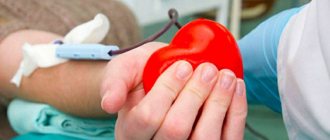In the modern world, almost every person’s morning begins with a cup of their favorite coffee. This drink has firmly entered our lives thanks to its unique taste, enchanting aroma and invigorating properties. But most doctors recommend eliminating or eliminating the use of the aromatic drink. After all, the bulk of authoritative foreign studies agree on one thing: coffee leaches calcium from the body, contributing to the development of certain diseases. Let's look at the effect of caffeine on the human body in more detail.
Why coffee leaches calcium
In the human body, coffee increases acidity by shifting the balance of acids and alkalis. These acidic compounds increase and provoke the release of calcium (Ca), which compensates for the lack of microelements. In an acidic environment, calcium is not able to be absorbed, so it is excreted naturally.
One cup of drink leads to the loss of 40 mg of calcium. If a person drinks 3 cups, then calcium in the bones decreases by 120 mg.
However, it is not only coffee that removes calcium from the body. It is dangerous to drink tea and sparkling water in large doses, as they are even more saturated with caffeine. This concentration of the substance is also found in other products that a person consumes every day, and does not think about the dangers this poses to him. These are products such as semolina porridge, meat dishes, as well as spicy and pickled foods.
Therefore, before you completely give up a cup of coffee, you need to pay attention to your diet. It is important to eat foods rich in healthy substances. And to reduce the negative effects of coffee, it is recommended to drink the drink with a slice of lemon.
Iron absorption: what helps?
In addition to enemies, iron also has friends. Among these is copper – it ensures the production of cerulloplasmin and thereby promotes good transport of this microelement into the blood. That is why copper deficiency is often diagnosed with anemia.
Other helpers are zinc and cobalt. They also improve iron absorption. You can find them in cocoa, liver and seafood. And, of course, when correcting low hemoglobin you cannot do without ascorbic acid. Vitamin C significantly increases the absorption of iron, so it is always included in medications for the treatment of anemia.
In foods, ascorbic acid is found in lemons, grapefruits, strawberries, oranges, apples, kiwis, strawberries, tomatoes, bell peppers, and cauliflower.
Do not forget to combine iron with folic acid, the deficiency of which also causes the development of anemia. You can find it in young nettles, parsley and dried apricots, as well as special pharmaceuticals.
Remember to consult with dietitians or nutritionists about major changes in your usual diet (training in the intricacies of proper nutrition and appropriate education allow them to make such recommendations).
The importance of a chemical element for the body
Calcium is essential for the human body. With its help, many organs function and function properly. If the human body does not receive enough of this mineral, the functioning of many organs is disrupted and health deteriorates. The body is provided with the necessary trace elements through special foods, as well as through medications. In the body, this useful mineral is mostly found in bone tissue.
This useful microelement is needed for the following processes:
- Normalization of stable functioning of the nervous system. Caffeine is a natural stimulant for normal blood circulation and also stimulates the nervous system.
- Normalization of metabolism.
- Stabilization of the blood clotting process.
- Maintaining optimal bone tissue condition.
- Prevention of oncological diseases.
Despite the fact that coffee washes away calcium, one cup will not cause severe harm to the body, but even vice versa. Thus, it can increase motor activity, increase not only physical but also mental performance, and also eliminate drowsiness and fatigue.
Contraindications
Contraindications include individual intolerance, which does not occur very often, as well as previous operations, heart attacks, strokes and diseases of the cardiovascular system, among which, first of all, it is necessary to note atherosclerosis, tachycardia and angina pectoris .
Coffee is also not recommended for children, teenagers, overly irritable and emotional people. In addition, coffee consumption should be avoided during particularly hot times of the day and year.
Other contraindications include diseases of the liver, kidneys, digestive system and diabetes.
Common causes of calcium deficiency
There are several reasons that a person may develop hypocalcemia:
- Pregnancy and breastfeeding.
- Adolescence from 9 to 18 years. During this period, active skeletal growth occurs, and this requires a sufficient amount of calcium.
- Wrong diet. Eating certain types of foods can cause the body to develop a deficiency of a useful mineral.
Therefore, it is important to review your diet, add healthy foods, eliminate or minimize harmful foods.
Habits that “flush” calcium from the body are as follows:
- Excessive alcohol consumption, as well as smoking.
- Drinking carbonated drinks in large doses. Some of these drinks contain phosphorus, which not only washes away, but also prevents calcium from being absorbed. This makes bones more prone to fractures.
- Long-term use of certain medications.
- Consuming a lot of salt.
In addition, hypocalcemia is affected by strict diets, which include foods that are not able to provide a sufficient amount of this microelement into the body. Environmental factors also negatively affect calcium levels in the human body. This is the influence of heavy metals, radiation and toxic substances.
But it’s not only food that affects the leaching of useful minerals from the body. The deficiency is affected by intense physical exercise, sudden changes in weight, prolonged swimming, as well as occupational hazards such as shock acceleration and vibration.
Iron absorption: what interferes?
Unfortunately, sometimes even taking iron supplements does not help quickly eliminate anemia. And all because for the successful absorption of iron, special conditions must be created. This microelement accumulates gradually, so when treating anemia, the course of taking special medications will be long (from three to six months or even more).
Please note that not all cases of anemia are due to iron deficiency. Any hematologist or experienced nutritionist will confirm this to you (even you, having taken courses in dietetics, will easily understand this). In some situations, a deficiency of folic acid or vitamin B12 is to blame.
Therefore, if your hemoglobin level is low, you need to additionally check the serum iron content in your blood. If it is low, then yes, you are really dealing with a deficiency of the specified mineral, which will have to be replenished.
Don’t be surprised, but the doctor may ask you to also take a blood test for ferritin - this is a complex protein complex that in humans acts as the main intracellular iron depot.
The ferritin level shows how much iron the body has stored in reserve. By the way, this analysis is often prescribed by nutrition consultants when they develop a diet for clients who want to lose weight. In our nutrition courses we talk about why this is important to do.
In short: with frequent blood loss or lack of iron intake from food, ferritin levels begin to gradually decrease, as its reserves are gradually used up. As a rule, a decrease in the level of this protein complex occurs long before anemia is diagnosed, when the amount of hemoglobin in the blood may still be normal. That is why controlling ferritin allows you to prevent anemia in time and solve the problem in its infancy.
If iron deficiency is no longer a concern, a registered dietitian or nutrition consultant will prescribe a special diet rich in iron-rich foods.
However, nutritional correction will be effective only for mild anemia. In more complex cases, you will have to add iron supplements to your diet.
Which ones to choose, consult your nutritionist. We review this information in detail in our online nutritionist courses at the School of Dietetics of the Wellness Consulting Academy.
However, keep in mind that the body absorbs divalent iron best, while the successful absorption of the trivalent analogue requires additional energy, and sometimes it is not enough. Therefore, when purchasing iron-containing preparations, pay attention to the valency of the iron it contains.
In addition to this factor, the transport of the microelement from the stomach into the bloodstream and body tissues is of greater importance. Mucopolysaccharides play an important role here, as they bind iron atoms and deliver them where needed. If the connection is unsuccessful, then the specified mineral will continue to transit through the intestines, without bringing any benefit to the body.
Typically, such a problem occurs as a result of inflammatory diseases of the stomach or disorders of its mucous membrane. So it is quite difficult for people with a sick stomach to solve the problem of anemia. Here you definitely can’t do without consulting a doctor.
You will have to restore the functioning of your stomach, and then adjust your diet so that iron deficiency no longer occurs. A consultant nutritionist can provide assistance in creating a menu, or take training in nutrition yourself so that you can understand everything without outside advice.
Pay attention to the fact that the increase in hemoglobin is promoted not only by the intake of iron, but also by the production of the hormone erythropoietin by the kidneys. If you have kidney problems, the production of this hormone may be difficult. The same thing happens during times of stress. If hemoglobin does not increase even after long-term use of iron-containing medications, then you should check your kidneys and think about your emotional state.
And finally, do not forget about the influence of nutrition on iron absorption. For example, foods containing large amounts of calcium and magnesium should not be combined with medications to treat anemia. With such a tandem, iron is practically not absorbed. There should be at least 2-3 hours between taking iron and calcium.
For the same reason, iron-rich beef and liver are not served in the same meal with calcium-rich dairy products or magnesium-rich nuts and grains. There is one more nuance: while treating anemia or consuming foods with iron, you should not drink a lot of coffee and black tea. Caffeine and tannin interfere with the normal absorption of this mineral, so never take medications to increase hemoglobin with these drinks.
Eggs, corn, soy and wheat are other enemies of iron. They contain phytates and phosphates, which impair its absorption from the stomach into the blood and tissues. Oxalic acid, which is abundant in sorrel, spinach and blueberries, has a similar effect.
And one more little tip: do not combine iron-containing foods with foods rich in fiber, as this can slow down the process of iron absorption due to prolonged digestion of food.
We give more detailed recommendations on combining different foods in our online dietetics courses at Lara Serebryanskaya’s school of nutritionists.
Symptoms of calcium deficiency in the body
If calcium deficiency is minor, then a person may not feel or notice it. There are several symptoms that indicate that the human body does not have enough of this useful element:
- Problems begin with teeth, they become fragile and weak, and caries or periodontal disease occurs more often. Painful sensations are typical.
- Muscle spasms of the limbs appear.
- There are painful sensations in the bones, crunching, aching.
- Early gray hair.
- Strength is lost, and it is difficult for a person to do ordinary daily activities.
- Problems with the normal functioning of the heart: tachycardia, changes in blood pressure.
- Problems with nails. They become brittle and begin to delaminate.
- There is a change in the functioning of the nervous system. The person develops irritability and anxiety.
If the disease is just beginning to manifest itself, then it is easy for each person to make up for the lack of a useful microelement on their own. To do this, it is enough to introduce the right foods into your diet. But if nothing is done, serious health problems may arise. Over time, a person may develop osteochondrosis, which leads to increased bone fragility.
If these symptoms occur, the patient should consult a specialized doctor.
It will be necessary to undergo a full examination and a hair analysis to determine the necessary microelements in its composition. A blood test is also taken to determine the presence of ionized calcium concentration in it. It is possible to determine bone density and structure using densitometry.
Diagnosis of the problem
If the symptoms discussed above appear, you must undergo the following tests, which will certainly establish a diagnosis:
- Densitometry, which helps determine bone mass density.
- Blood test to determine the amount of ionized calcium.
- Study of hair structure for the composition of microelements.
If the deficiency is confirmed by tests, you must immediately begin the process of replenishing the mineral in the body.
How to restore your calcium supply
Calcium deficiency can be restored with the help of special medications. It is important to correctly determine the dosage of the medicine, since an excess of this trace element is as harmful as its deficiency. To do this, you need to consult a doctor.
But you can restore the deficiency of a useful microelement with the help of food:
- Seafood. Their composition includes vitamin D, without which Ca cannot be fully absorbed.
- Hard cheese. You need to eat up to 100 grams of cheese per day, since this dosage contains 750 mg of useful microelements, and this is its daily norm.
- Dairy products.
- Sesame seeds.
- Fresh greens.
Medications are the last thing you need to take.
After all, if possible, it is better to use tips to restore the balance of this useful mineral. With proper nutrition and moderate coffee consumption, there will be no calcium deficiency.
The connection between diseases and calcium leaching from bones
Calcium levels will become critically low if you regularly drink more than three cups of coffee per day. This may cause:
- problems with the skeletal system;
- violations and thinning of tooth enamel;
- frequent muscle contractions throughout the body;
- disruptions in the functioning of the cardiovascular system.
In the early stages, calcium deficiency is almost unnoticeable, and as the number of daily doses of caffeine increases, the risk of disease progression also increases.
In the early stages, calcium deficiency is almost asymptomatic. But in the future it will definitely cause serious complications in the functioning of the body. A common disease associated with unlimited coffee consumption is osteoporosis.
Effect of caffeine on bone tissue
Nowadays, many young people are trying to lead a healthy lifestyle. They are interested in the benefits and harms of the food and drinks they consume. Coffee lovers are no exception, because espresso is present in their daily diet. It is interesting to find out how coffee affects a person, what negative characteristics it has. One of them is the ability to flush out calcium from the body.
It has been experimentally proven that caffeine leaches calcium from bones. The substance has this ability due to its properties, namely:
- Caffeine has a strong diuretic effect. In the process, a person loses a lot of fluid, and along with water, mineral components, including calcium.
- The main component contained in coffee beans affects hormonal levels. It enhances the effect of adrenaline and histamine on the body. These, in turn, increase calcium output.
- Strong espresso with a sour taste affects the acid-base balance within the body. Calcium normalizes balance, neutralizes the effects of caffeine, due to which the mineral content decreases in tissues.
Therefore, drinking a lot of strong coffee is harmful; the daily norm of the drink is no more than three cups.
By drinking one cup of rich espresso made from robusta beans, you lose six milligrams of calcium.
Instant coffee or whole beans?
The morning starts with coffee. Then during the day the person drinks several more cups of this drink. Some people brew the drink in a coffee machine, some in a Turkish coffee machine, and some drink instant coffee. There is no doubt that bean coffee is much more aromatic, more enjoyable and of higher quality. Unfortunately, the vast majority drink instant coffee - it saves time.
If you are unable to give up coffee, then at least give up the instant drink. Below are a few reasons to avoid this type of coffee:
- There are only 3 grams of coffee in a teaspoon of instant coffee, and the remaining 5 are powder, flavorings and colorings.
- Many people mistakenly believe that caffeine from instant coffee is not as harmful to the human body as caffeine from a grain drink. In fact, caffeine from an instant drink leaves the body after 10 hours. Caffeine from a grain drink leaves the body within two hours. This means that regular consumption of instant coffee in large quantities can lead to a caffeine overdose.
- There is instant decaffeinated coffee. It's not as harmless as it seems. This type of coffee contributes to the formation of kidney stones.
- Instant coffee is contraindicated for people with stomach diseases, as it is highly acidic. For people with this disease, it is better to add a little milk to their cup of coffee.
- Preservatives added to instant coffee have a negative effect on metabolism.
Instant coffee has only two advantages - it is convenient to store and can be prepared quickly. Undoubtedly, for people who are constantly busy, these are weighty arguments.
How to neutralize the negative effects of coffee
It is difficult for a coffee lover to give up his favorite drink. But you don't have to do this. You need to know how to neutralize coffee. And make sure that its use brings only pleasure and joy. A morning cup of coffee is possible if you adjust your diet. You should study the beneficial properties of products, find out which of them compensate for the lack of calcium. It is better if a nutritionist gives good advice. After all, when creating a menu, he will definitely take into account the individual characteristics of the body. Making your diet healthy is the main goal.
Amount of caffeine in different types of coffee
Below is a table showing the amount of caffeine in different types of coffee. It will help you determine how much caffeine you consume daily.
You can determine the amount of caffeine in the drink yourself - the more roasted the grain, the lower the caffeine level.
| Coffee type | Caffeine content per 200 milliliters |
| Mexican | 169 |
| Javanese "Arabica" | 188 |
| "Minas" | 162 |
| "Salvador" | 185 |
| Cuban | 192 |
| "Peru" | 171 |
| "Cameroon" | 179 |
| "Arabica" | 176 |
| "Colombia" | 196 |
| Haitian | 205 |
| "Guatemala" | 187 |
| "Santos" | 159 |
| Indian "Meleber" | 196 |
| "Costa Rica" | 171 |
| "Nicaragua" | 181 |
| Ethiopian "Mocha" | 165 |
| "Venezuela" | 193 |
Science is moving forward, and a special sensor has been developed for coffee lovers that determines the amount of caffeine in a cup of an invigorating drink. How does he work? The device's sensor emits a red, yellow, or green light depending on the amount of caffeine in the drink. With this device you can learn everything about the coffee you drink.
The amount of caffeine in a drink is also affected by the way it is prepared. For example, coffee brewed in a Turk contains much more caffeine than espresso from a coffee machine.











